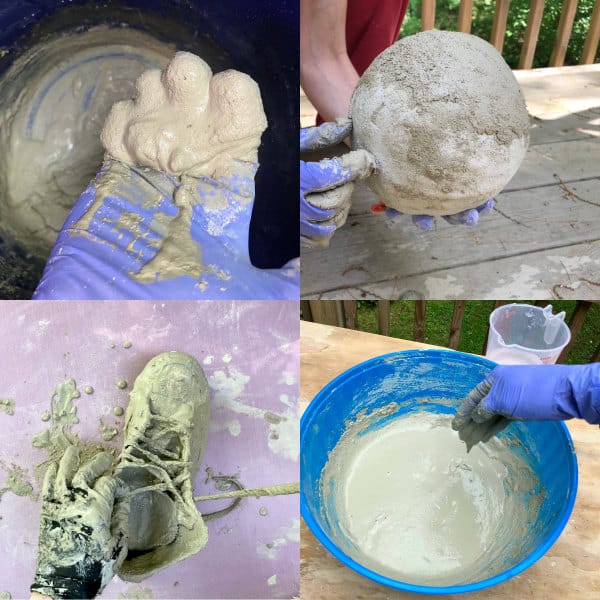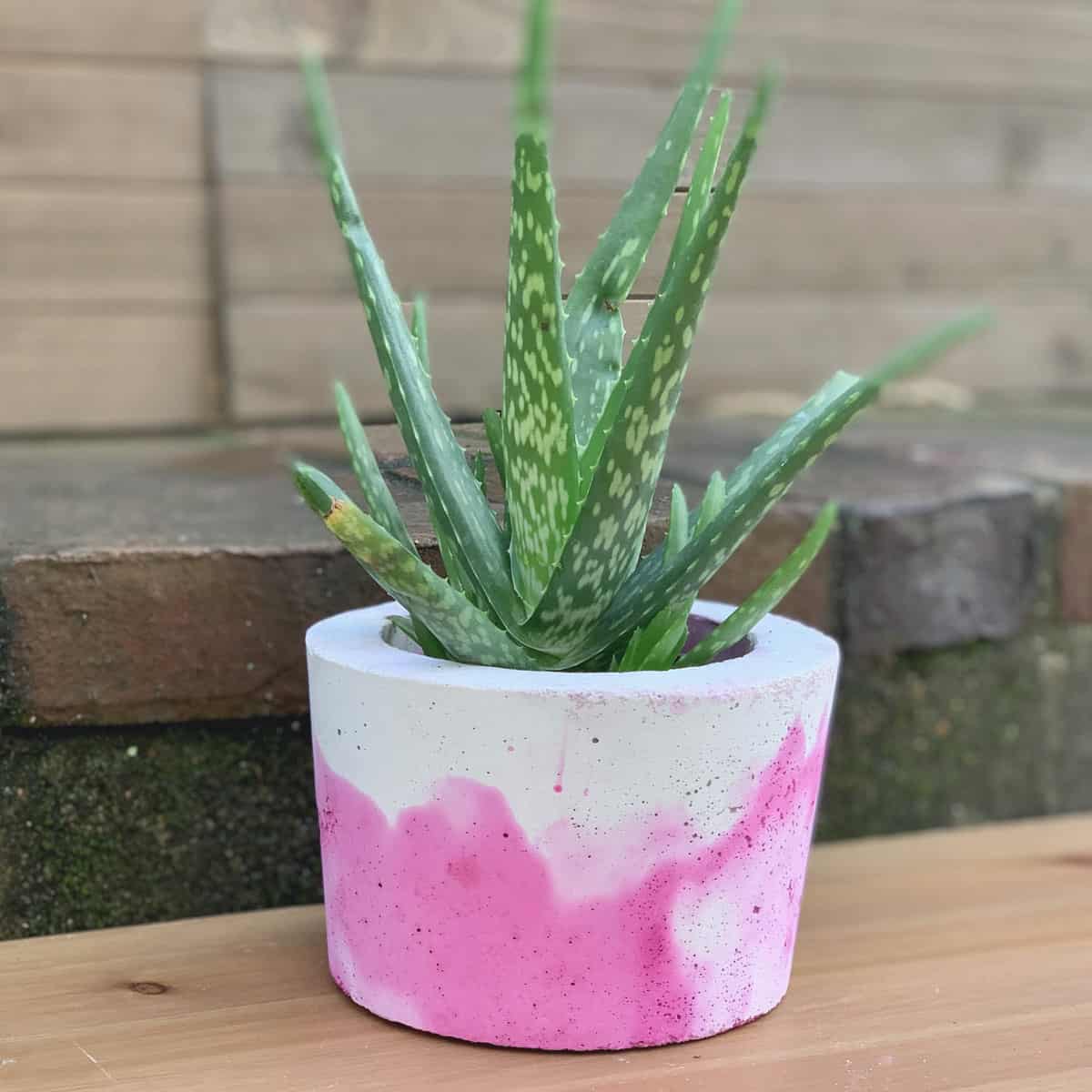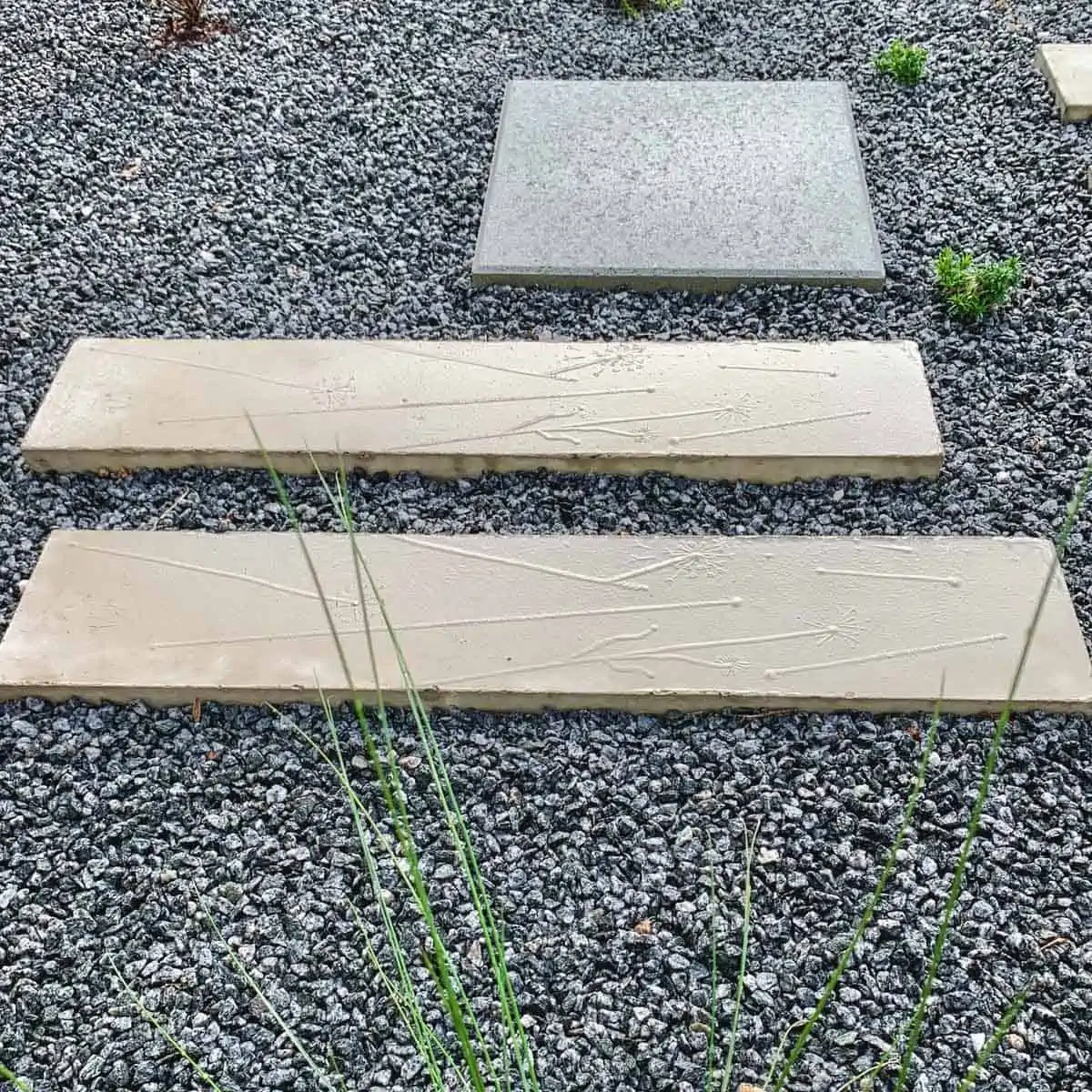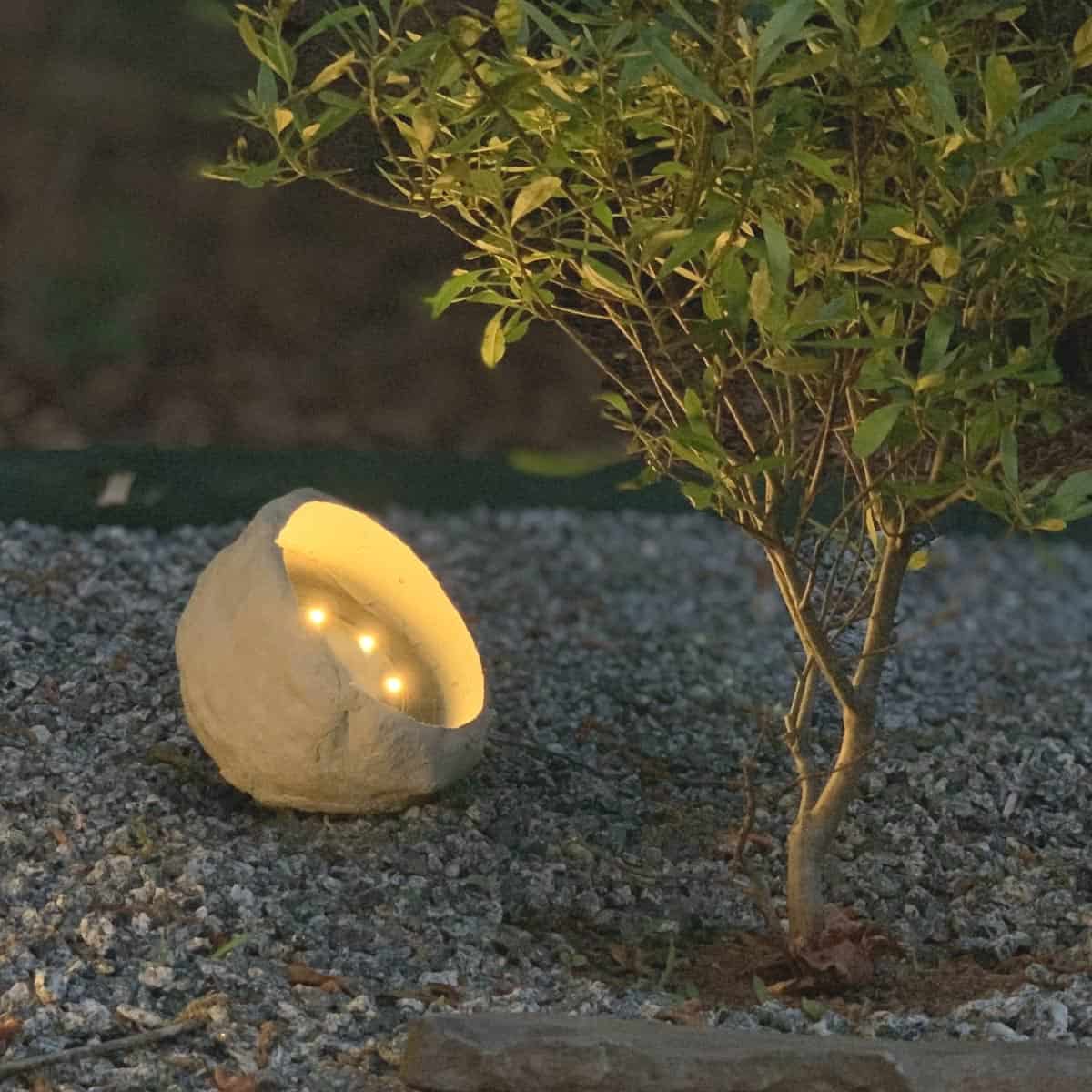The Correct Water to Cement Ratio for Your Concrete Crafts
Today, I’m here to discuss one of the most crucial aspects of working with concrete: getting the water-to-cement ratio right.
Have you ever dived into a concrete crafting project only to find yourself puzzled over how much water to mix with your cement? If so, you’re in good company.
Why Does Water Ratio Matter?
Excess water could weaken and crumble your concrete. Too little, and it might be impossible to work with.
Conversely, too little water makes the mix challenging to manipulate.
The water to cement ratio is your secret to success in concrete crafts.

Officially, it’s a 1:4 ratio, but there’s more to understand to achieve success. The 1:4 ratio is just a starting point.
The correct ratio determines the strength, durability, and workability of concrete.
And mastering a lower ratio of water to cement is your secret ingredient to success.
Achieving a low water-cement ratio enhances the resulting concrete’s higher strength and overall quality, a principle well-known by construction professionals and the American Concrete Institute.
But fear not because mastering this ratio can turn your projects from good to great.
The Secret Ingredient? It’s Not Just Water
Every concrete mix out there is a little particular with its own needs. Yep, you heard me.
Depending on the brand and type within a brand, you’ll find a variety of official recommendations for how much water to throw into the mix.
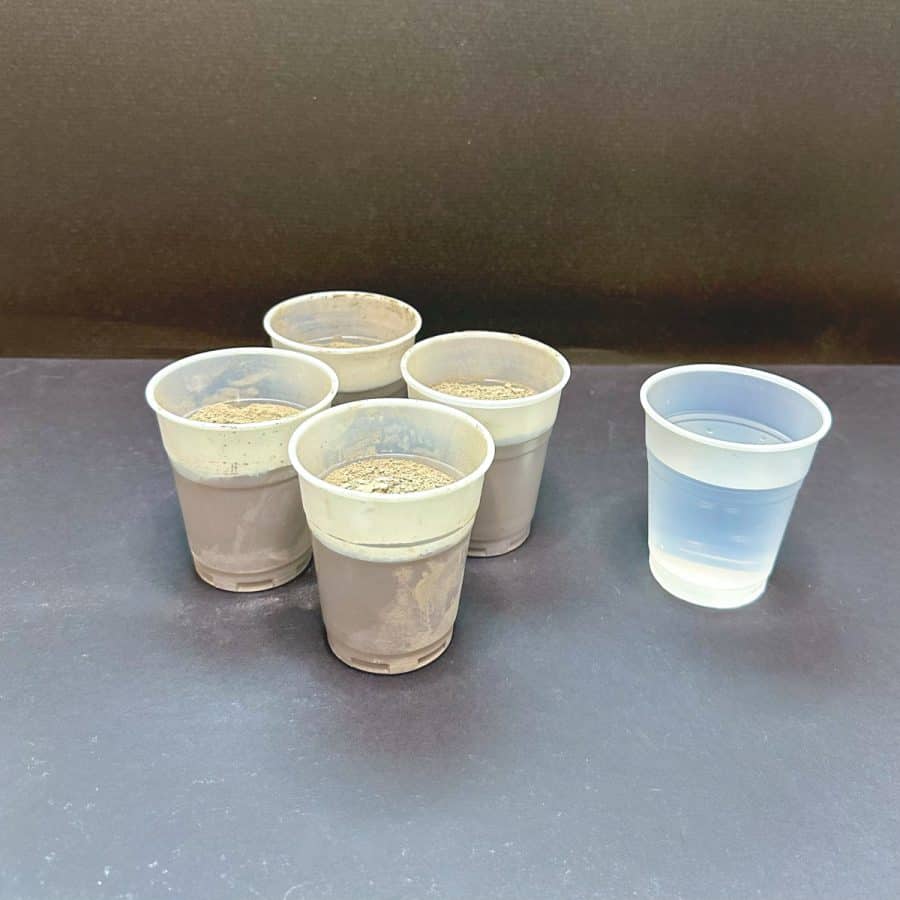
As I mentioned in the introduction, the consensus is that the correct water to cement ratio is 1:4 water-to-mix, but now let me explain why it’s not so straight-cut.
It’s because not all mixes strut the same stuff. Gravel in the mix? That’s one story.
A sleek, gravel-less mix? The exact amount of water can vary depending on the ingredients. A blend with gravel behaves differently than one without.
Think of it this way: molds with thin walls need a more flowy mix, not stiff. But adding more water is not the right solution; it will just weaken your cured concrete.
But, sometimes, the mix comes to the rescue with unique ingredients that save you from adding more water. Tricky, right? Polymers or other additives have been integrated into the mix for better flow.
You can learn more about the common mixes in my comprehensive guide to concrete mixes.
That’s why I emphasize the significance of determining what consistency you need. If you’ve ever baked, you may have a good sense of what I mean.
Different flour types behave differently when making bread or pizza dough and work better depending on the desired result.
It’s the same with concrete. This diversity among mixes is why detailed guides on specific applications, such as my post on the best cement mix for your projects, are invaluable.
But here’s the secret– when it comes to concrete, it’s not about the precise measure. It’s about the look and the feel.
Be a Concrete Swami: Trust Your Gut
I know, I know. You want numbers. If you’re like me, you crave that exact water cement ratio to cling to like a life raft.
But here’s the thing: after a few projects, you’ll start to get it. That concrete will speak to you.
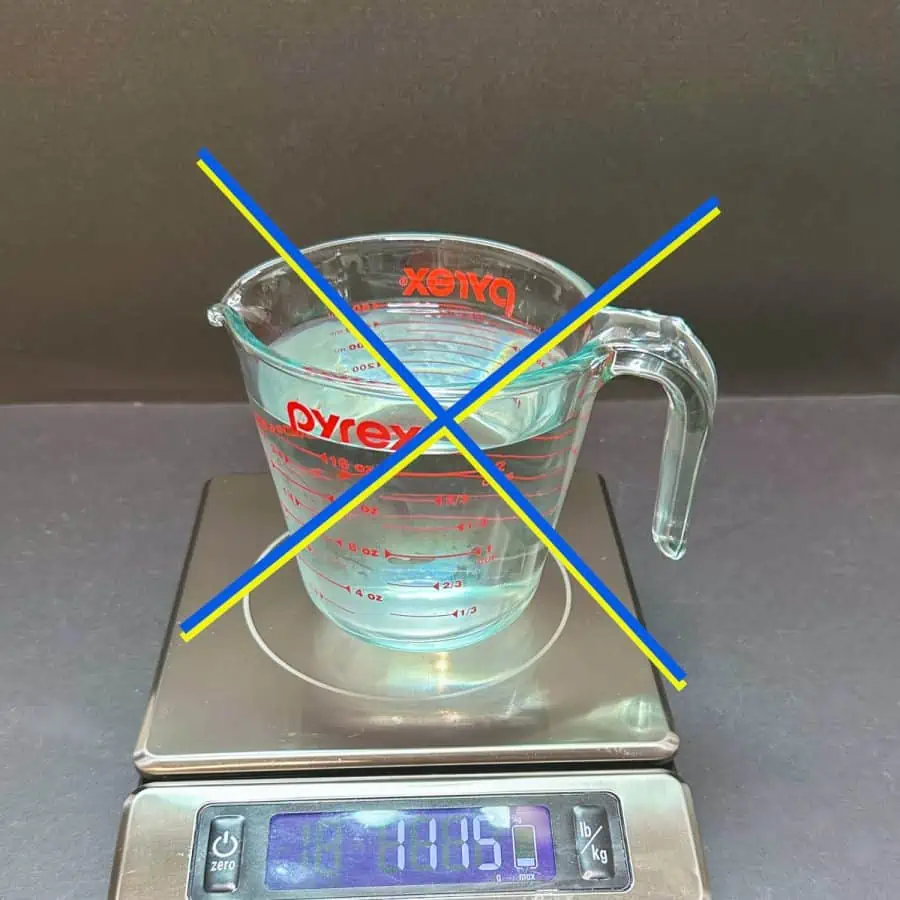
You’ll know when it’s too thick, thin, or just right—no scale needed.
I’ve worked to help you by giving you the consistency to aim for in each of the concrete tutorials on this site. I usually show a photo for a visual reference.
But for a starting point, aim for that 1:4 ratio and adjust from there.
Testing For Slump
You can do a slump test to check your consistency: take a handful of mixture, scoop it up in your bowl, and let it drop and fall to the sides.
How it falls, flows, or slumps shows your consistency.
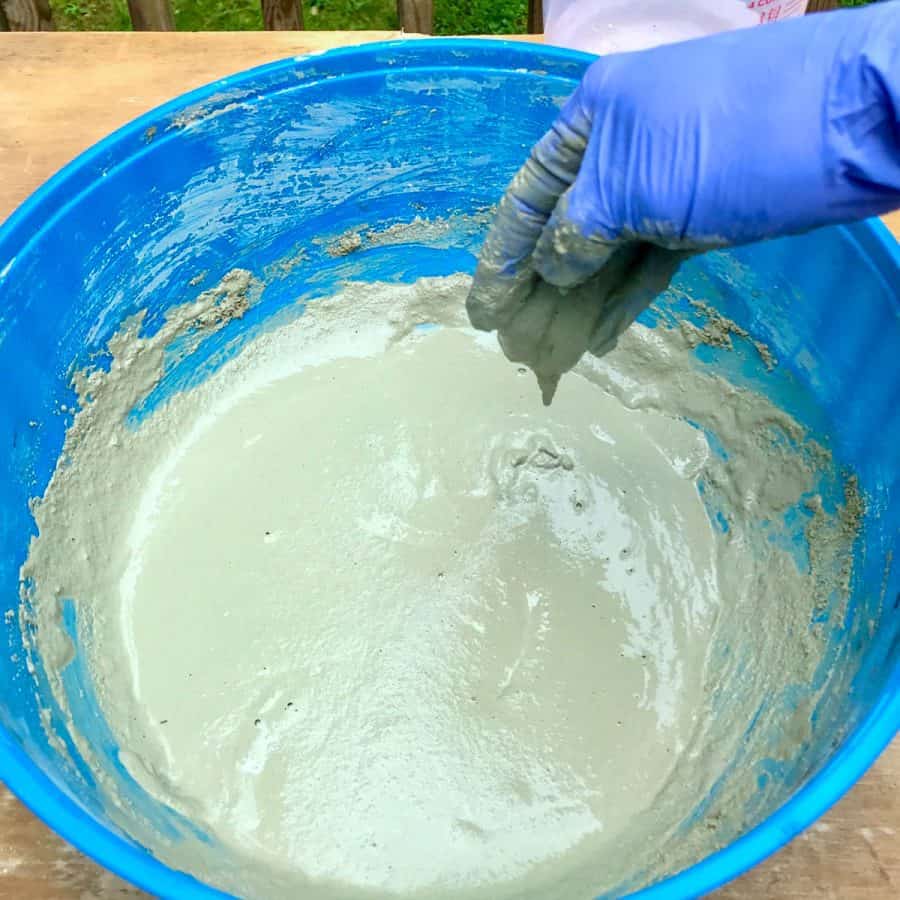
If it flows continuously and doesn’t hold its form, it has no slump, which means it has flowability.
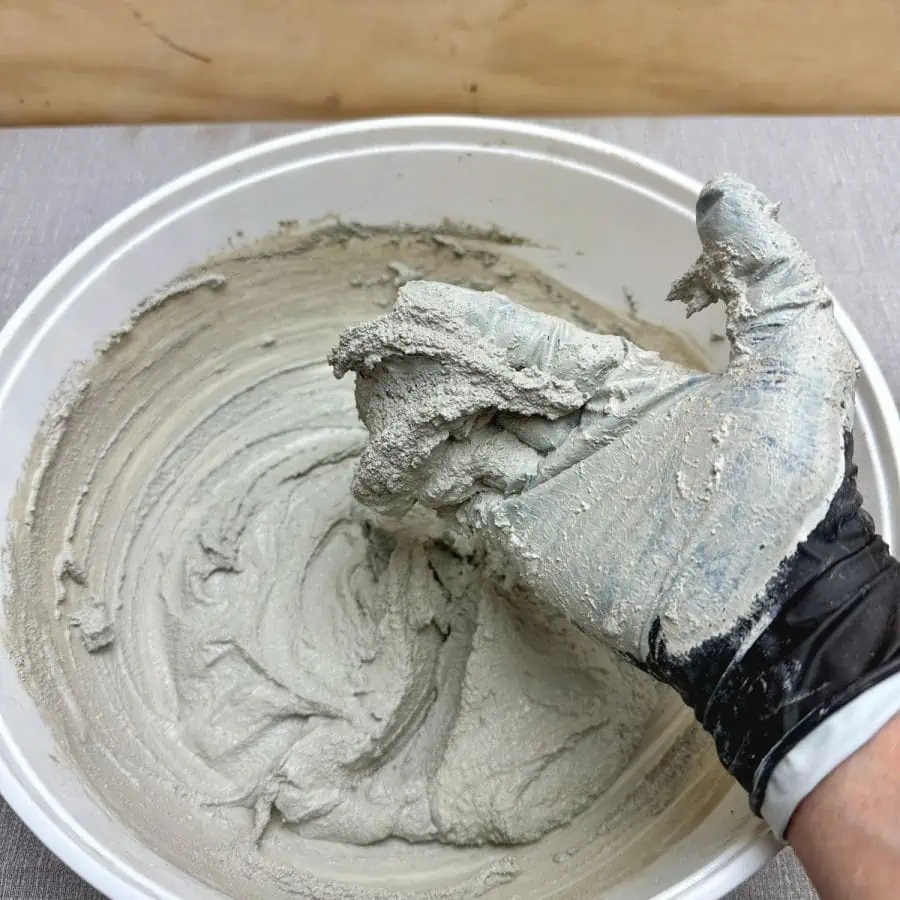
When it carries a bit of form, it has some slump–this is more of a thick milkshake, thick brownie batter, or even peanut butter consistency.

If it moves but in more of a glob and holds a fair amount of shape, it’s moldable or sculptable– which means it has total slump.
Remember, reaching the right consistency for your specific project is the goal
Climate Affects Water Content
Here’s another point where it gets interesting: the environment affects how much water you add to your concrete mix.
You’ll need less water in a humid climate than working in a dry, desert area. It means that strict measurements go out the window.
Instead, focus on the consistency of your mix.
Where your craft can make a big difference, humidity means less water and desert conditions mean more.
And by the wya, I’ve had my fair share of triumphs and oops moments in concrete making. Once, my goal was to create a set of concrete coasters, but my first attempt ended with a batch more suitable for frisbees.
The second attempt resulted in pretty neat coasters! It was a stark reminder of how crucial the appropriate water-cement ratio is. But, with some practice and patience, I started to get the hang of it.
That’s my take on mastering the water-to-cement ratio for your concrete crafts. It’s a mix of science, art, and intuition. Trust your instincts, don’t be afraid to get your hands dirty.
And hey, if you ever feel lost, remember: concrete crafting is as much about the journey as it is about the stunning piece you end up with.
For more help expanding your concrete making skills, check out my articles on working with sealers and concrete pigments.
Don’t forget to Pin it for later!


